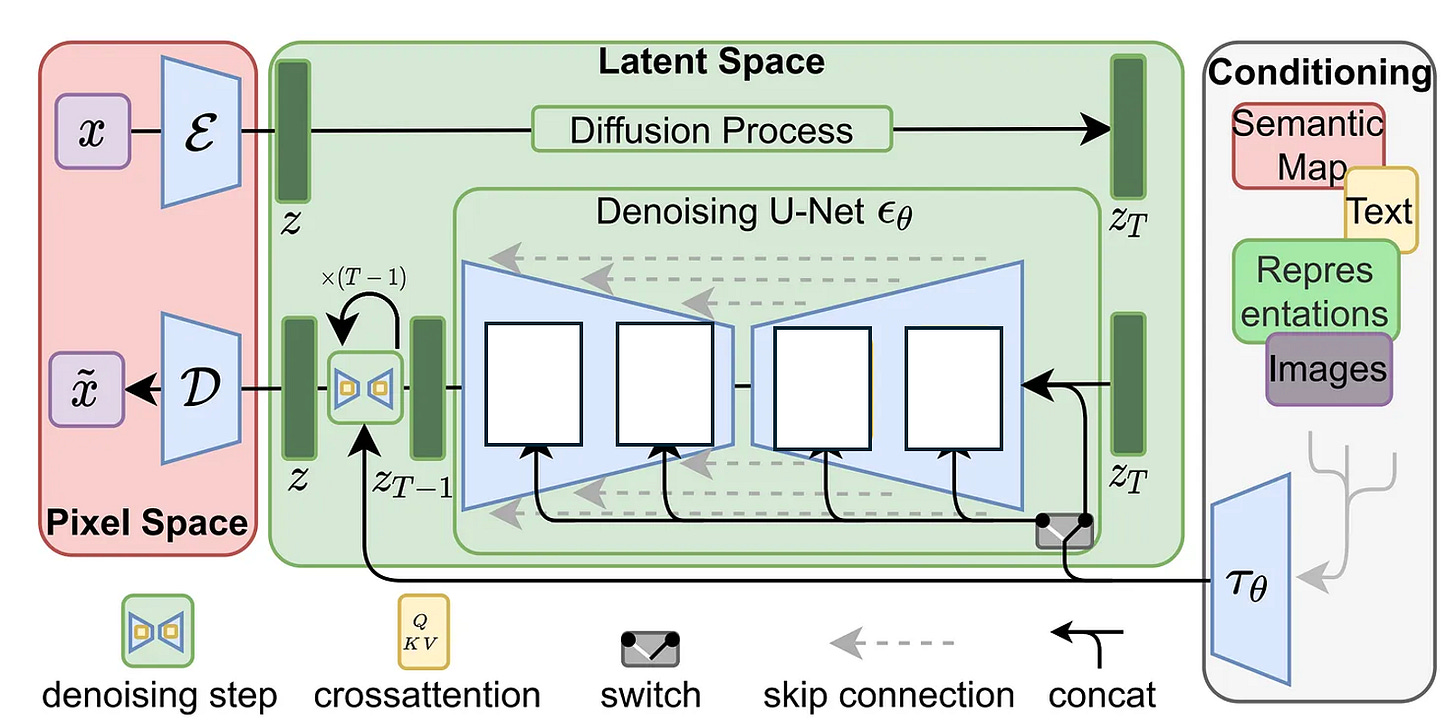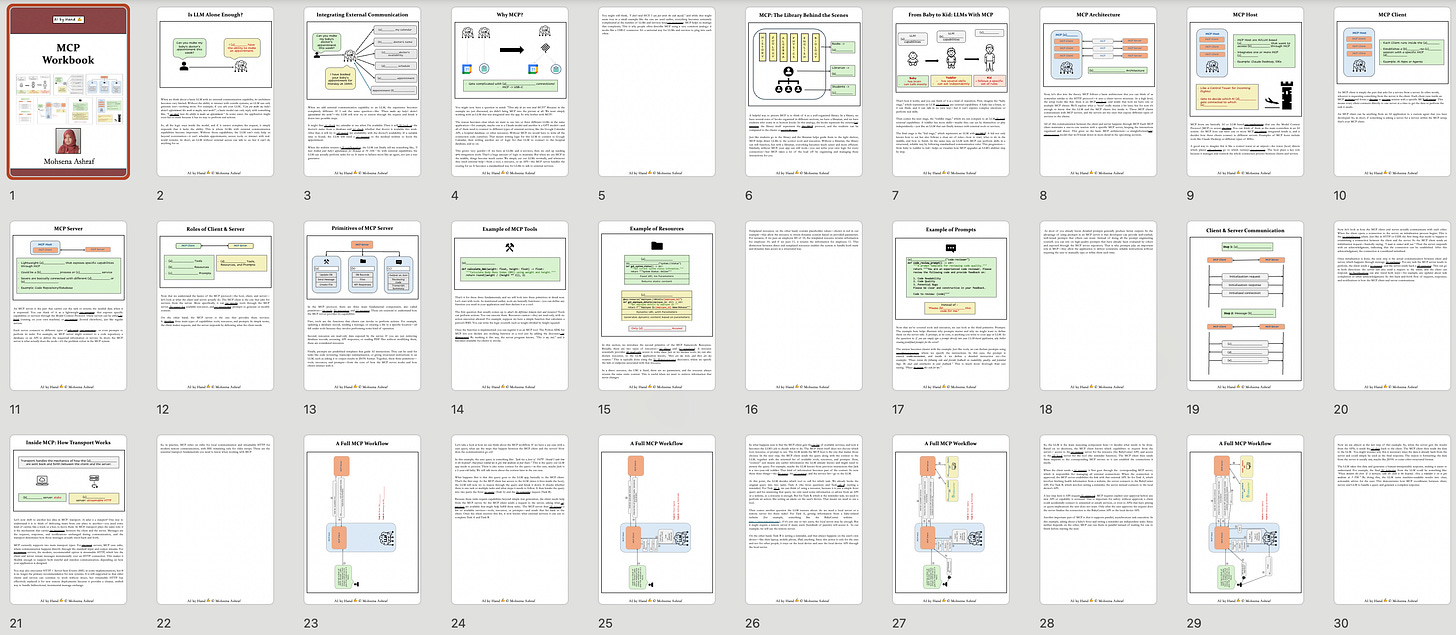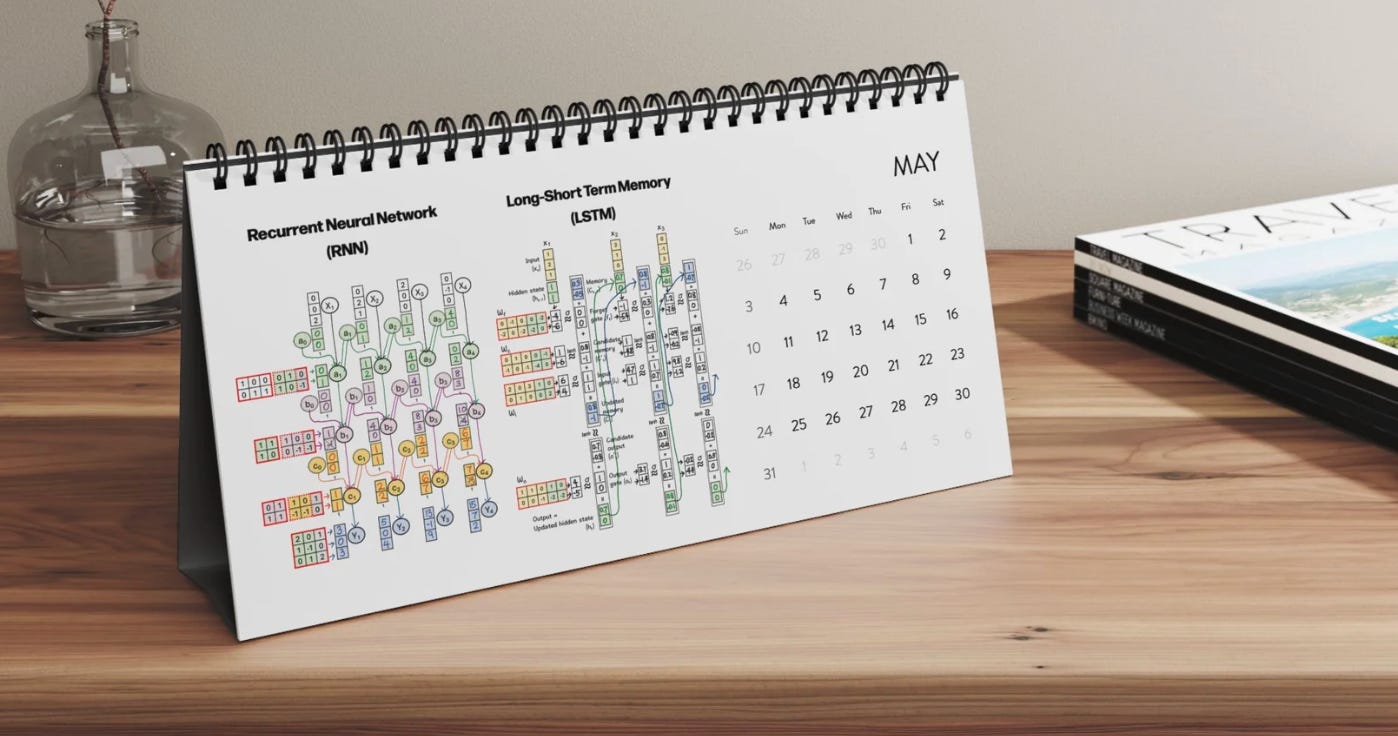MCP Workbook
Foundation AI by hand ✍️
Previously, I shared a workbook on LLM vs. RAG vs. Agent, and the community response was overwhelming—thousands downloaded it and studied it.
Mohsena, my PhD student, has been working hard to take that workbook idea even further—into advanced territory with the Model Control Protocol (MCP). The content is based on her lecture series on Advanced Agents by Hand hosted by Packt Publishing.
We’re pleased to share the initial draft of her new MCP Workbook with you, and we’d love to hear what you think.
⬇️ Download the PDF at the bottom of the post.
Design Philosophy
Our goal is simple: to make readers actively read the text and trace the diagrams.
Too often, complex diagrams look impressive but fail as learning tools. They’re visually stunning, but readers don’t know where to begin—so instead of engaging deeply, they just admire the illustration from a distance, like this diagram below that explains the original stable diffusion model.
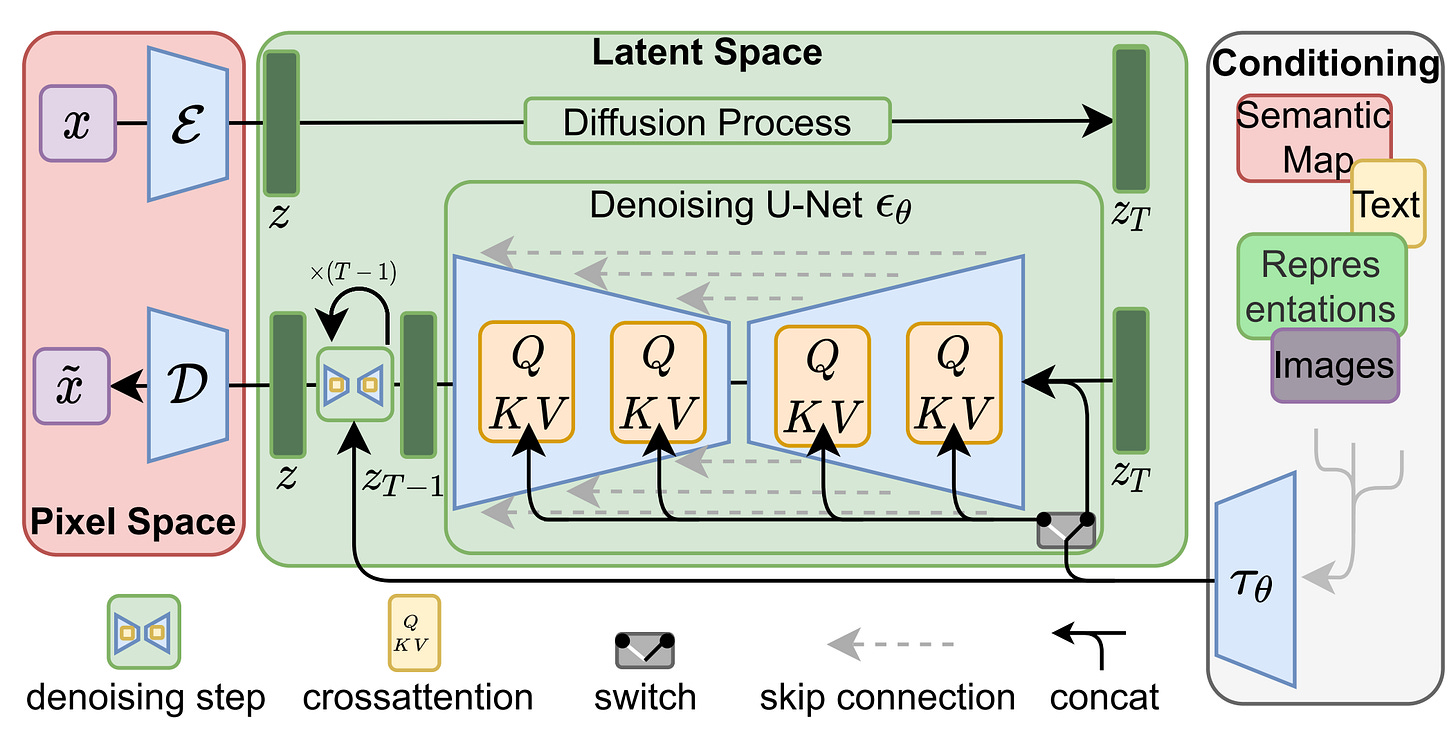
I felt both awe and intimidation when I first saw this diagram.
It’s like standing at the edge of the Grand Canyon and stopping there. The view is beautiful, but I am not taking the trail down to explore what truly makes it extraordinary, because it is too grand and I don’t know where to start.
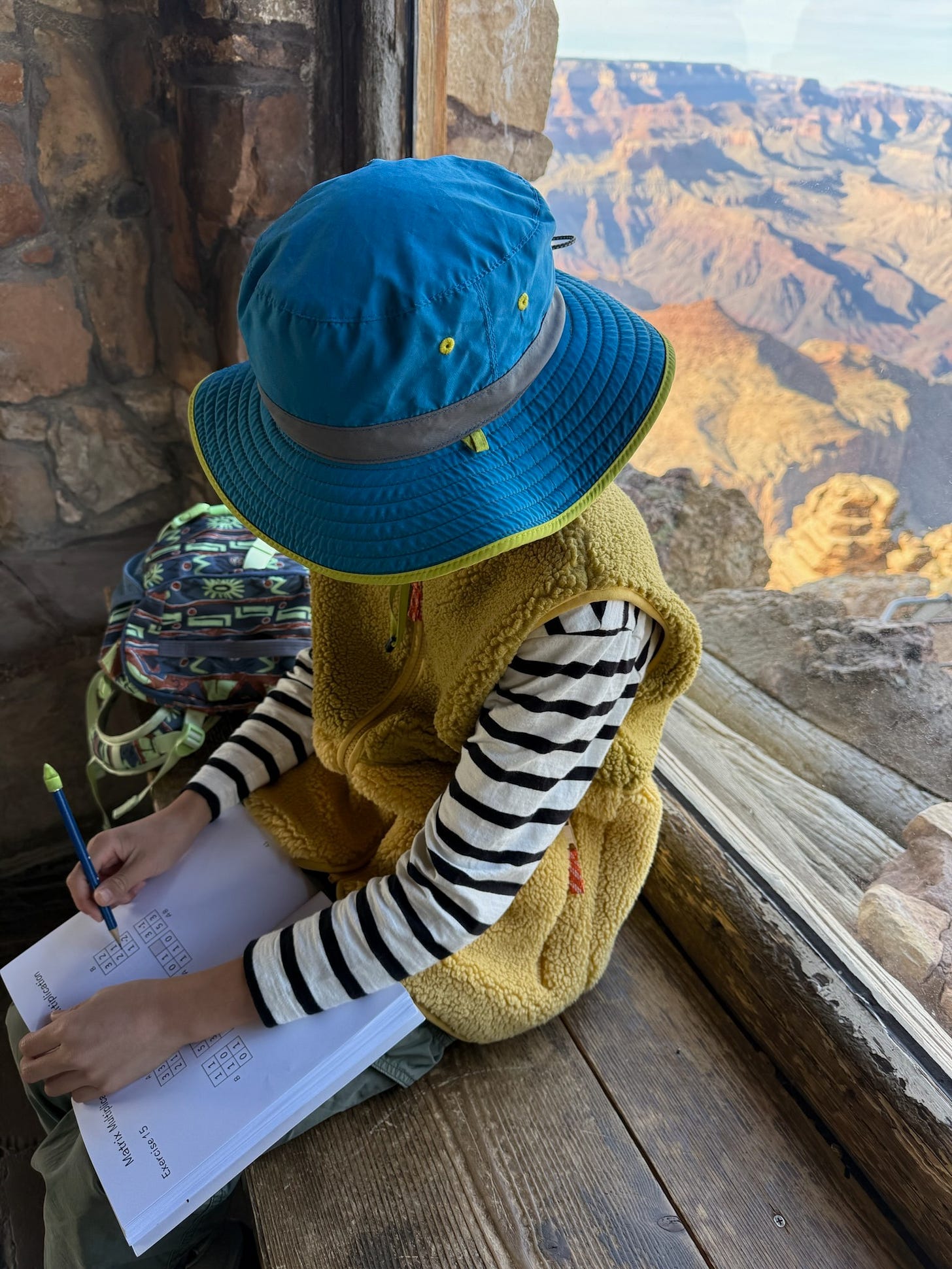
So the question becomes: How do we guide readers to take the trail?
Our answer: blanks and clues!
We purposely insert blanks into every diagram.
We embed clues in the accompanying text.
We create a gentle “pull” forward—each clue invites the reader to take one more step, just like trail markers guiding hikers deeper into the canyon.
Let’s apply this method to the latent diffusion model diagram.
Blanks
Clues
The U-Net also uses (1) QKV attention, which lets the model “look around” the latent space and gather the most relevant features before predicting the next denoised step.
Did I just make you look at the diagram and read the clue text?
If so, then our by-hand approach is doing exactly what it’s meant to do.
This interplay between reading and drawing transforms passive admiration into active discovery. It turns intimidating complexity into a trail of small, doable steps—encouraging readers not just to look at the diagram, but to enter it and explore.
Download
🔥 New 2026 AI by Hand ✍️ Desk Calendar (USA only)



